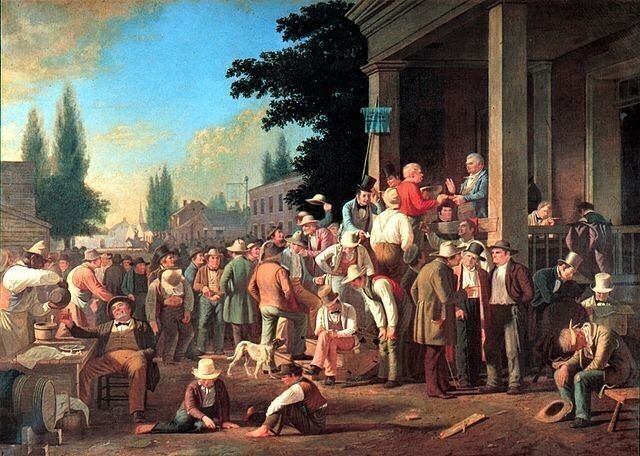
When delegates to the Constitutional Convention gathered in Philadelphia, they were anxious about the health and safety of our young nation. Beyond the well-enumerated flaws of the Articles of Confederation, the delegates faced an existential question: Could the quarreling colonists be united under one enduring government?
Most historical evidence pointed to a negative answer. The delegates would have been familiar with the European wars of religion, the English Civil War, the “Glorious Revolution,” not to mention the fall of the Roman Republic. There was good reason to be skeptical of the ability of a diverse political community to sustain itself through internal conflict. All the more important, then, was the goal of designing a set of rules to govern the distribution, exercise, and transfer of power—a constitution.
Even after the Convention, the Framers spoke out on the danger of “factions” and the importance of respecting the norms and laws of constitutional government. In Federalist No. 10, James Madison acknowledged that “liberty is to faction what air is to fire,” famously arguing that a large, representative democracy was the best way to counter groups of citizens “united and actuated by some common impulse of passion, or of interest, adverse to the rights of other citizens, or to the permanent and aggregate interests of the community.” George Washington, in his Farewell Address, warned of the “baneful effects” of faction. “A fire not to be quenched,” he said, “it demands a uniform vigilance to prevent its bursting into a flame, lest, instead of warming, it should consume.”
To be sure, the Framers did not envision the modern party system; the Constitution makes no mention of political parties. But they appreciated the need to moderate conflict between individuals and groups with strong political disagreements. As such, Article I, Section 4 and Article II, Section 1, call for elections that enable the peaceful transition of power between factions. With ratification, states and prospective candidates agreed to abide by those procedures. Despite harrowing moments when that commitment appeared to waver, our constitutional system has endured.
In 1876, Rutherford B. Hayes, the Republican governor of Ohio, was widely expected to lose to Samuel Tilden, the Democratic governor of New York. Initial returns showed Tilden winning the popular vote, but neither candidate had a majority of Electoral College votes, thanks to disputed results in four states. A special commission was appointed by Congress to adjudicate between the parties. Democrats, sensing an impending loss, considered derailing the process, but Tilden ultimately conceded peacefully with the Compromise of 1877.
In 1960, John F. Kennedy, the Democratic senator from Massachusetts, and Richard Nixon, the Republican Vice President, were locked in a tight battle through Election Day. Overnight, the election was called for Kennedy by a comfortable Electoral College vote of 303 to 219, but a narrow margin of 112,000 in the popular vote. Rumors quickly spread that voting in Illinois and Texas had been manipulated by Kennedy forces; Nixon supporters urged their candidate to contest the results. But Nixon conceded peacefully, telling a friend that “our country cannot afford the agony of a constitutional crisis.”
And in 2000, George W. Bush, the Republican governor of Texas, narrowly led Al Gore, the Democratic Vice President, in Florida after the first results were tallied, thus triggering an automatic statewide recount. After a machine recount revealed an even narrower lead for Bush, a legal battle ensued over the scope and method of further hand recounts, with teams of opposing lawyers swarming the Sunshine State. The dispute ultimately reached the Supreme Court, which ruled the hand recounts unconstitutional under the 14th Amendment. Despite calls from his supporters to continue the fight, Gore conceded peacefully, saying, “While I strongly disagree with the Court's decision, I accept it.”
Our grand experiment in republican self-government depends on good-faith cooperation. Under the First Amendment, we can protest the government and criticize the outcome of an election, but if we lose the argument, we must accept the results. And that’s what Americans have always done.
In his First Inaugural Address, President Ronald Reagan praised our collective achievement:
To a few of us here today this is a solemn and most momentous occasion, and yet in the history of our nation it is a commonplace occurrence. The orderly transfer of authority as called for in the Constitution routinely takes place, as it has for almost two centuries, and few of us stop to think how unique we really are. In the eyes of many in the world, this every 4-year ceremony we accept as normal is nothing less than a miracle.
Indeed.
Nicandro Iannacci is a web content strategist at the National Constitution Center.






